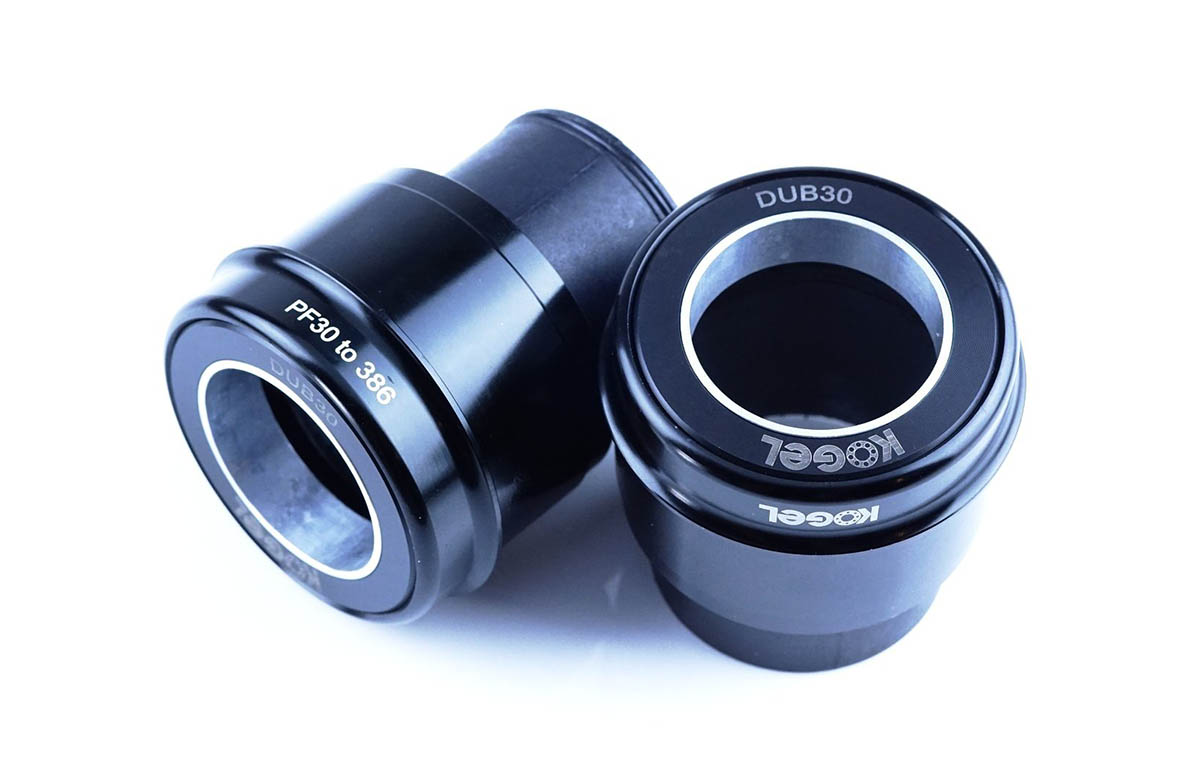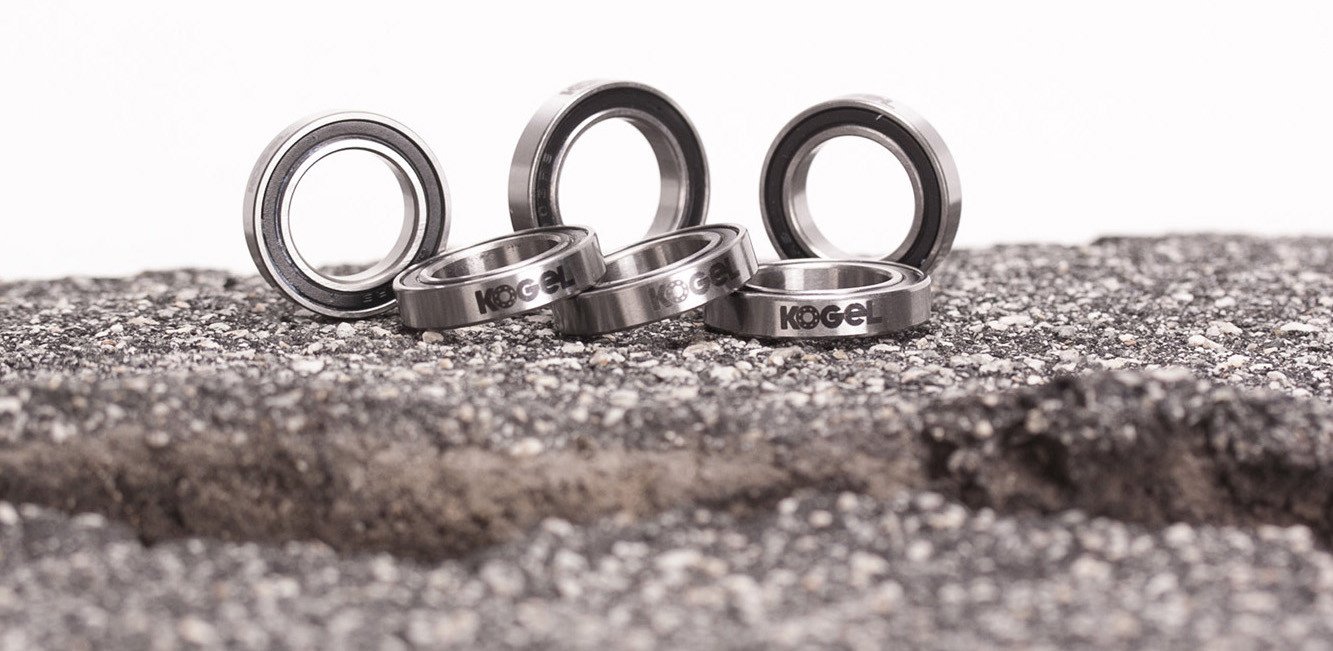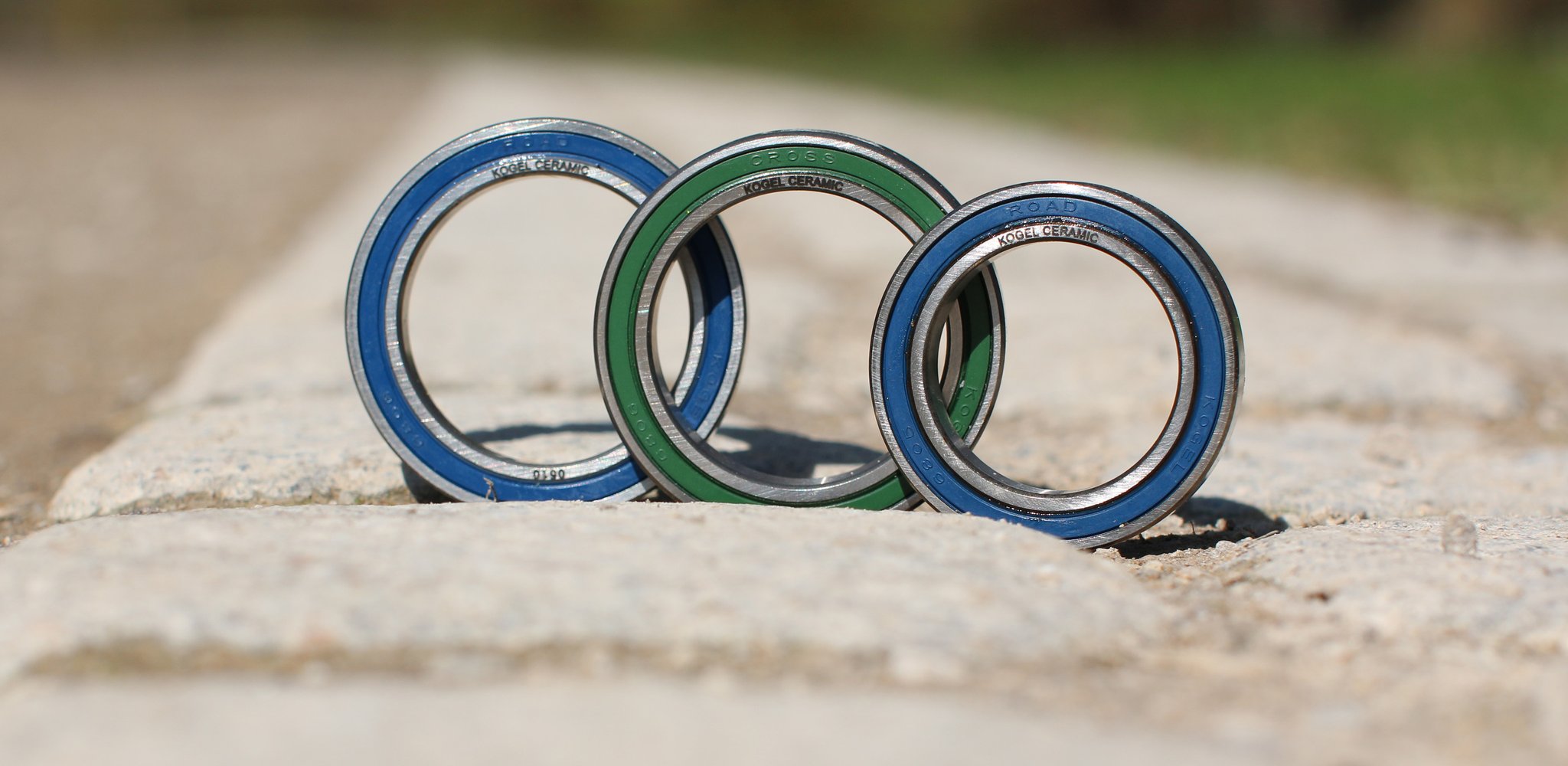We know, there’s no such thing as a stupid question. But there are some questions you might not want to ask your local shop or riding buddies. AASQ is our weekly series where we get to the bottom of your questions – serious or otherwise. Hit the link at the bottom of the post to submit your own question!
Without things that spin, your bike would never go anywhere. That makes the humble bearing a fairly important part of the bicycle equation – which is probably why they remain a hot topic.
That was clear given the number of bearing related questions we received for this week’s AASQ. Kogel is an interesting company in that they offer only ceramic bearings for all of their products. This seems to have led to a number of questions about their function, durability, maintenance, and how they compare to other bearing types.
To get to all of the different questions, we’re splitting this AASQ into two – with today’s installment focused on functionality and durability. Part Two focuses on maintenance and different bearing types!
Functionality
Hi Kogel! First: I love your bearings! I work as a bike mechanic in Austria, and I often get asked about the price/performance ratio. As you may know, Austrians tend to be loyal but price sensitive customers. Could you provide me with an ultimate & logical (for Austrians) answer to why the hell would an average Austrian mountain biker need to pay $175 for a GXB BSA BB instead of $25 for a regular one that would last maybe few kilometres less but won’t cost that much? Nothing personal, but it would help me to deal with my customers in a better way! 🙂 Love,M
If I have a good set of wheels with steel bearings, what advantage would it be to replace the bearings with your ceramic bearings? – Michael
Kogel: There is no single answer to this, rather there are several answers that lead to the justification of buying high quality bearings:
- Durability: all our bearing products have a two year replacement warranty with very few questions asked.
- Better performance: Since every part of the bearings is optimized, the result is a better working bearing
- Cost of ownership: Kogel only requires a single annual maintenance to keep the bearings under warranty (but recommends sooner if the bearings feel gritty). Sounds better than buying and paying for installation every two months, doesn’t it?
- Time: Everybody is pressed for time nowadays, switching to a bottom bracket that lasts longer will save you some trips to the bike shop or your workspace
Your BB performance is partially depending on the frame manufacturer BB geometries. Recently Cervelo has increased their “official” tolerances for their BB up to 0.1 (45.88-45.96mm versus previous 45.96-45.98). Do you foresee such a wide tolerance as something acceptable for any bearing to properly work? – Jordi
Kogel: While the tolerances are tight, the executions in mass production are hard to follow for frame manufacturers. In carbon fiber more so than aluminum. Even though the manufacturing tolerance is roughly 0.05mm on a PF30, we have seen frame shells with much broader results. For our bottom brackets we consider frames of +/-0.2mm (four times the tolerance!) to be workable. Any smaller and you have a chance of breaking the frame, any larger and the cups will sit loose in the frame.
We have designed our bottom brackets to be tight where possible and relieve pressure on the bearings if they are pressed in slightly undersized frames.
Another (small) BB manufacturer ran some Bike-BB stiffness tests on a frame equipped with different BB-kits and found significant differences (the lowest one being with nylon bushings holding the bearings and the highest one with single piece BB-shell). Did you run similar measurements, any results you can share with us? Seems a key point so far no other BB manufacturers communicate around! – Jordy
Kogel: We did not run a similar lab test to quantify bottom bracket stiffness, but I am very eager to study this more. In order to increase bottom bracket stiffness, we believe in using metal cups, maximizing the contact area between the frame and cups, but mostly in moving the bearings out as close to the crank arms as possible. A wider platform puts less stress on the bearings, resulting in better stiffness and longer bearing life due to the reduced loads.
Is there actually an advantage to ceramic bearings? What about solid oil technology? – Troy
Kogel: The benefits of using a high quality bearing were covered in the first response. We consider hybrid ceramic bearings the most optimized version for bicycle applications (also check out Kogel’s posts on ‘Problems with Ceramic Bearings’ Pt. 1 and Pt. 2)
As for using solid oil in bearings: We have seen applications in the food industry from SKF and Ceramicspeed is experimenting with the same. The main benefit is reduced service intervals and I expect at the expense of higher friction.
This opens great opportunities for bearings that do not rely on spinning, but live a hard life: pivot bearings and headsets should benefit from this technology once it matures for bicycles.
What are your thoughts on T47 bottom brackets? As far as I can tell, there is not currently a T47 option in your lineup… – Justin
Kogel: Kogel has always believed in T47, the system looks solid with the only downside being that it adds weight to carbon fiber frames. The reason we have never made a bottom bracket is simply because of adaptation, or lack thereof. It seems that every BB manufacturer much larger than Kogel jumped on the system but no frame makers that do serious volume followed. With Trek’s announcement of introducing T47 on their 2020 bikes, we will have to rethink that statement.
Durability
I understand that ceramic bearings can be the fastest in a clean environment but does that change in dirty environments? Most of my clients ride in dirty conditions (Cyclocross, Gravel, and Fat biking) and have seen many high performance bottom brackets that have shortened life spans in these environments. Stainless bearings have had the longest service life in my experience and wondering if your research shows differently? What makes a certain bearing have longer life in gritty conditions than others? Cyclocross is one thing because an inspection/cleaning can happen between each one-hour race but gravel in 200 plus miles seems to be quite different. Thank you for your time. – Nathan
I have read that ceramic bearings are extremely sensitive to contamination and wear out fast if contaminated. The slightest dirt in a ceramic bearing and it won’t last longer than 40hrs losing all its magic on the way. As in low rolling resistance. More manufacturers going back to steel bearings therefore. Any comment on how true this is? I still have Cult bearings that run fine and have for years, but a Ceramic BB that water got into not so much, 2 weeks it lasted. – Max
Kogel: The key to making bearings last longer is in the seals and grease. What makes Kogel unique is that we started offering bearings that are specific for road bikes (aimed at lowest friction) and off-road bikes (aimed at best protection). Friction and durability are on opposite ends of the spectrum. A bearing optimized for the velodrome will die an unfortunate death before the halfway point of Dirty Kanza. A bearing built for cyclocross will not be great for a time trial.
Fun fact: during our sponsorship the UnitedHealthcare team, the entire road team ran our off road seals on road bikes as a request from the mechanics who needed the peace of mind for stage races. Aaron Gwin runs the road seals on his downhill bike because the lower friction makes a difference in races that are won or lost by seconds. Also, downhill bikes only leave the mechanic for three minutes per run and get checked in between runs.
From a mechanical engineering point of view, bearing seats should be machined in one go to ensure the best coaxiality / cylindricity… then why aren’t all the BB kits machined in one solid piece rather than 2 relative cups? That adds unnecessary tolerances to the already very poorly defined frame BB tolerances no?
Kogel: This idea works in theory, but in reality, many frames have cable guides and other obstructions running through the bottom bracket shell. Since this single tube inserted in the BB shell needs bearing stops on both sides, the drilling still needs to be done from both ends. I am not a machinist, but it seems that this could not be done in the same operation.
Another downside is that a one-piece bottom bracket will be hard to remove once a frame needs its internal wires or cables serviced.
How much faster does a bearing wear when adjusted too tight? What about too loose? – Visa
Kogel: The exact wear time depends on how much too tight or too loose, but it is easy to figure that compressing balls and races or letting them run loose and have the balls bounce around in the races is a recipe for disaster.
Now, check out Part Two for more on maintenance and the different types of ceramic bearings offered.
Got a question of your own? Click here to use the AASQ form and submit your own question!



